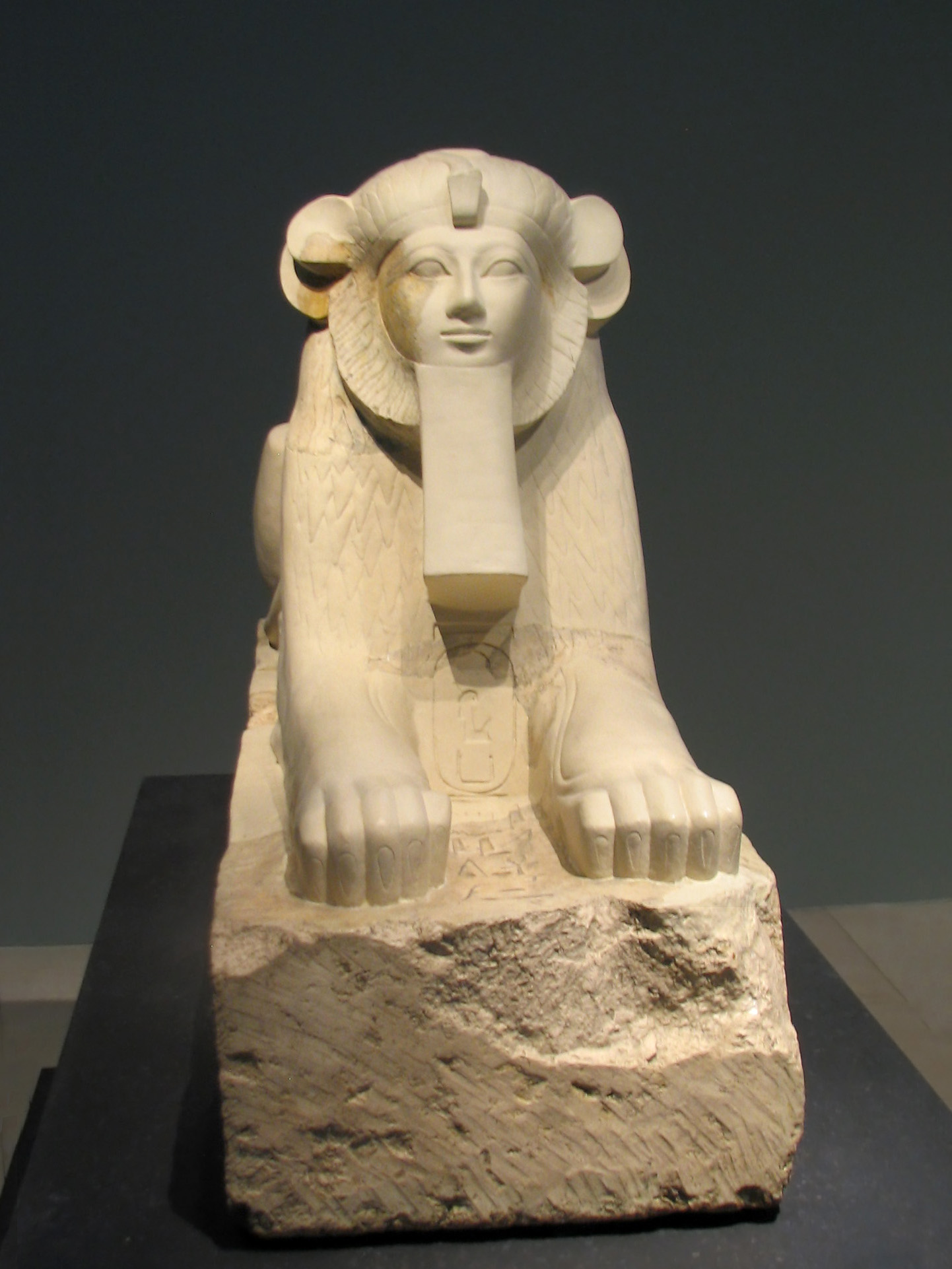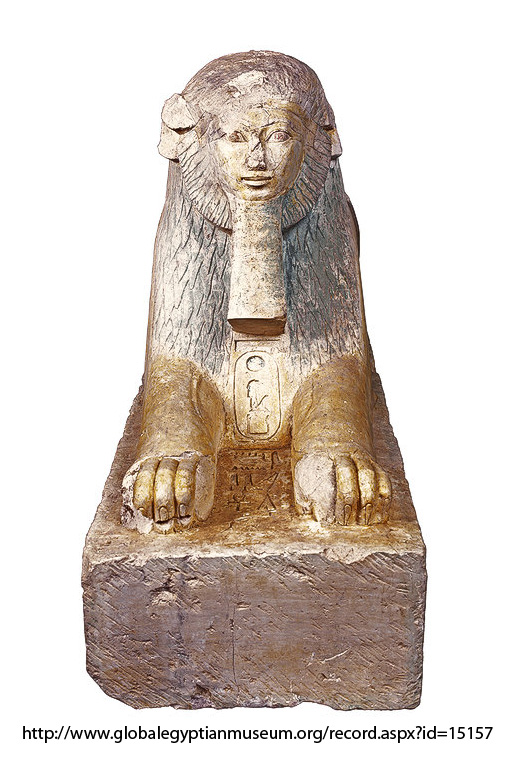(From info card)
"This sphinx of Hatshepsut is of a type known as a maned sphinx, for her face - the only part that is human - is framed by a lion's mane and ears. The more common type of sphinx features a complete human head, usually with a royal nemes headdress (see the [colossal Hatshepsut sphinx]).
"The maned sphinxes of Hatshepsut were inspired by earlier Middle Kingdom prototypes, though hers are smaller and have a much friendlier expression."
(For instance, Amenemhat III has a maned sphinx (Cairo Museum JE 15210) in which his expression looks quite fierce.)
"Remains of pigment show that the face was painted yellow, which is typical of depictions of females in Egyptian Art. The reconstructed parts of the sphinx have been cast from a nearly identical, but more complete, companion piece from Hatshepsut's temple that is today in the Egyptian Museum in Cairo."





